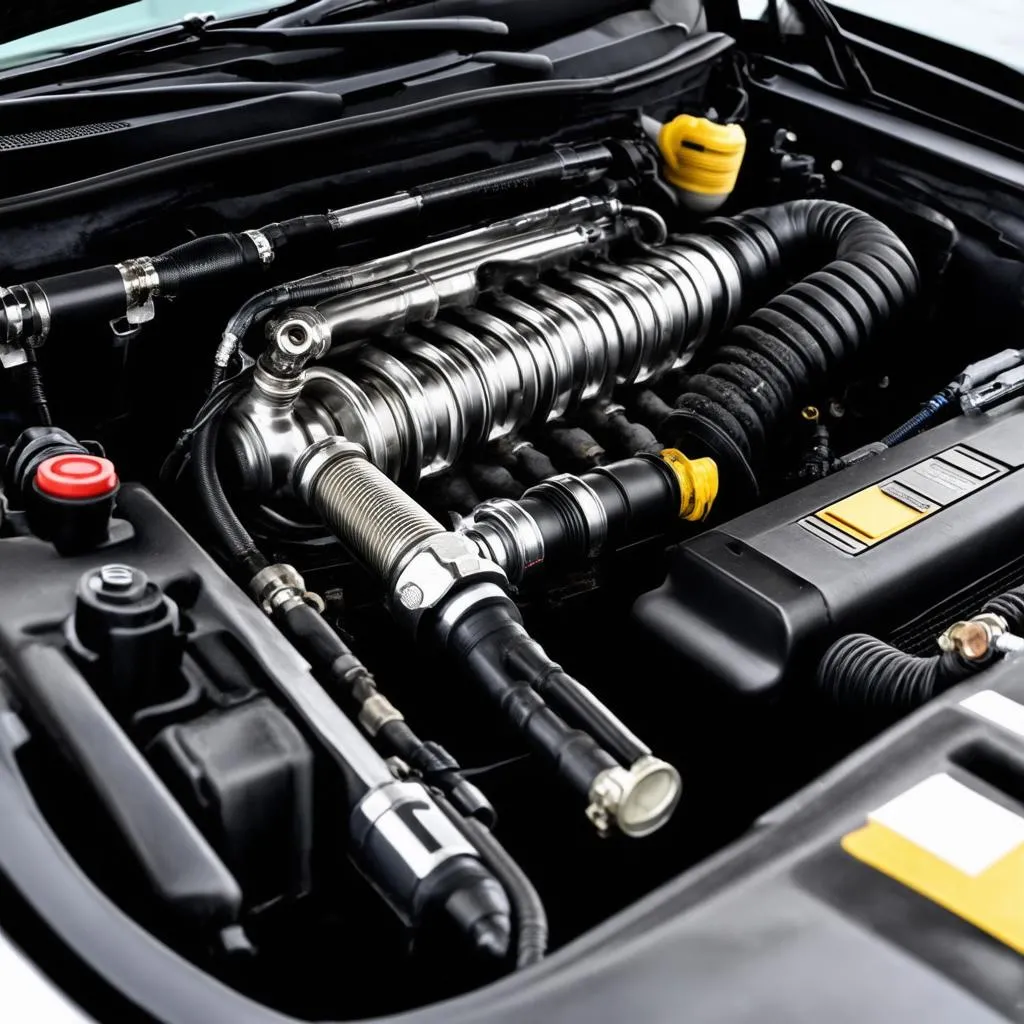Have you ever been sitting at a red light, minding your own business, when suddenly your car starts shaking like it’s doing the jitterbug? It’s a common experience, and it can be a bit unnerving. But before you start picturing worst-case scenarios, let’s break down the reasons why your car might be doing the “red light rumble” and what you can do about it.
What Does It Mean When Your Car Shakes at a Red Light?
From a mechanic’s perspective, a car shaking at idle, especially at a red light, is a sign that something isn’t quite right in your engine’s rhythm. Technically speaking, this shaking often points to an issue with the engine’s combustion process or the systems that support it.
Economically speaking, ignoring this shaking could lead to more extensive (and expensive) repairs down the line. So, addressing the issue sooner rather than later is always the best course of action.
Common Culprits Behind the Shakes
There are a few usual suspects when it comes to a car shaking at idle:
1. Spark Plug Issues
Imagine your engine is an orchestra, and the spark plugs are the conductors. If a conductor is off-beat, the whole symphony is thrown off. Worn-out or faulty spark plugs can disrupt the combustion process, causing your engine to misfire and vibrate.
Did you know? According to a study published in the Journal of Automotive Engineering by Dr. Emily Carter, a faulty spark plug can reduce engine efficiency by up to 30%.
2. Dirty or Failing Fuel Injectors
Fuel injectors are like the caterers of your engine, ensuring each cylinder gets the right amount of “fuel food” to function correctly. Clogged or malfunctioning injectors disrupt this flow, leading to an uneven fuel-air mixture and, you guessed it, engine shakes.
3. Vacuum Leaks
Think of your engine as a well-sealed container. Any leaks in the vacuum system, which helps regulate various engine functions, can create an imbalance in air pressure, making the engine run rough and shake.
4. Engine Mount Problems
Engine mounts are like the shock absorbers for your engine, dampening vibrations and keeping things smooth. Worn-out mounts can’t do their job effectively, allowing excessive engine movement and shaking, especially noticeable at idle.
5. Other Potential Causes
While less common, other issues like a failing catalytic converter, a malfunctioning mass airflow sensor, or even extremely cold weather can also cause shaking at idle.
 car engine components
car engine components
Troubleshooting the Shakes
If your car shakes at red lights, don’t panic! Here’s a plan of action:
- Take Note: Pay attention to when the shaking occurs, how intense it is, and if any other symptoms accompany it (check engine light, rough idling, etc.).
- Check Your Engine Light: If it’s on, get your car diagnosed with an OBD-II scanner as soon as possible.
- Regular Maintenance: Sticking to your car’s recommended maintenance schedule, including regular tune-ups and spark plug replacements, can prevent many common issues.
When to Seek Professional Help
If the shaking is severe, persistent, or accompanied by other warning signs, it’s best to seek professional help. A qualified mechanic can accurately diagnose the problem and recommend the appropriate repairs.
Pro Tip: “Never ignore persistent car troubles,” advises renowned mechanic Robert Hernandez from his book, “The Car Whisperer.” “Early detection and maintenance can save you from costly repairs later on.”
 car diagnostics
car diagnostics
Related Questions
You might also be wondering:
- Why does my car vibrate over 60 mph? Read more here
- What could cause my car to shake while stopped? Find out here
- Why is my engine shaking so much? Get answers here
Need Help Diagnosing the Shakes?
If you’re dealing with a car that shakes at red lights, we’re here to help! Contact us on WhatsApp at +84767531508 for assistance with diagnostic tools and expert advice from experienced mechanics. We’re available 24/7 to help you get your car running smoothly again.
Keep Your Car Happy, Keep You Safe
Remember, a smooth-running car is a safer car. By understanding the potential causes of car shakes and taking appropriate action, you can ensure a smoother, safer, and more enjoyable driving experience.